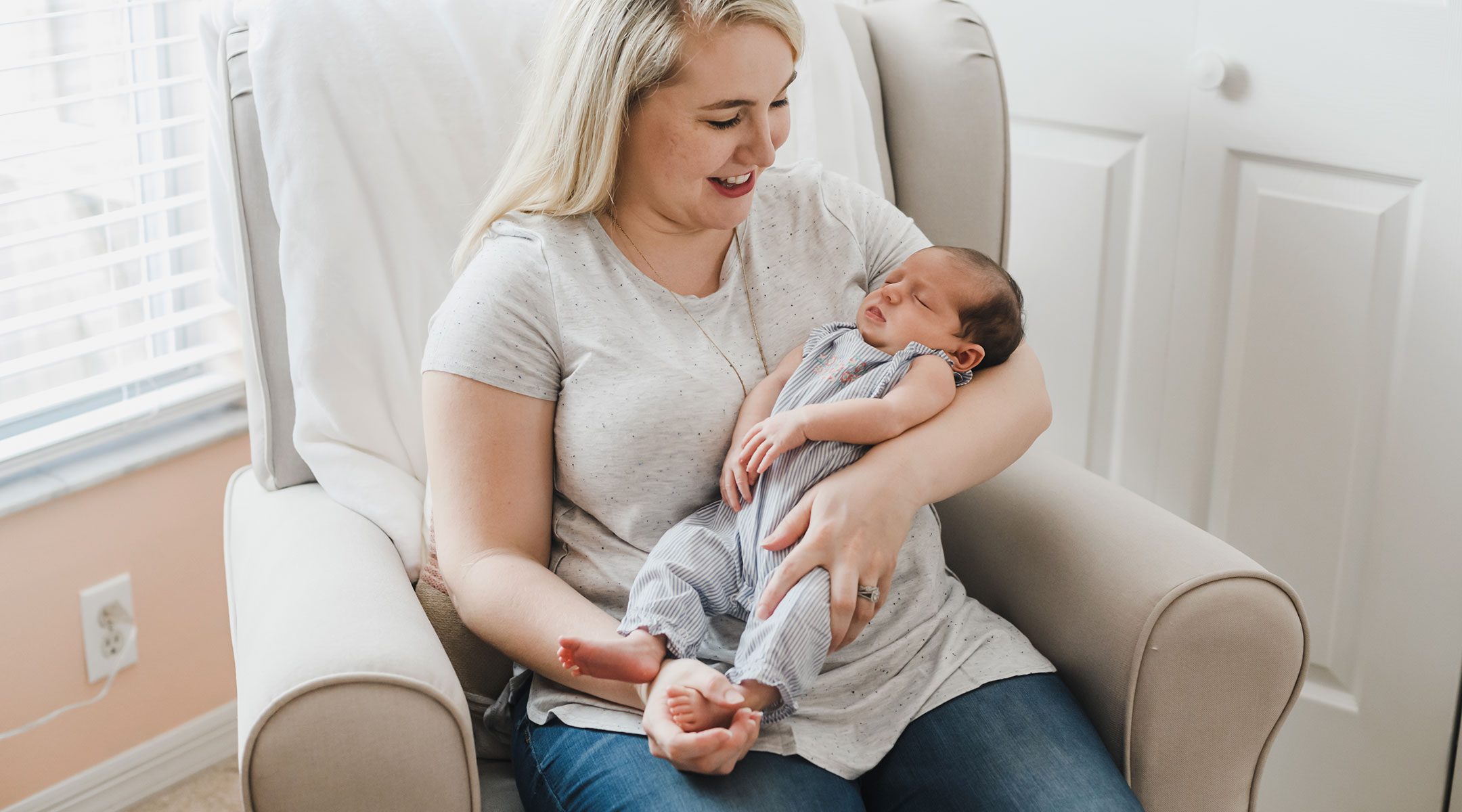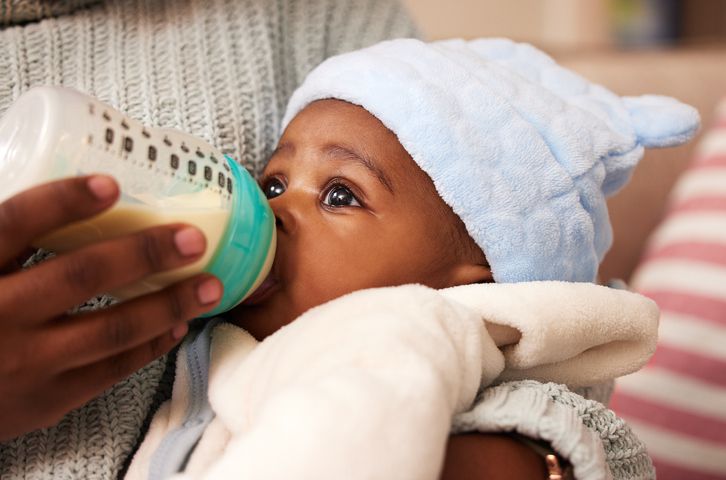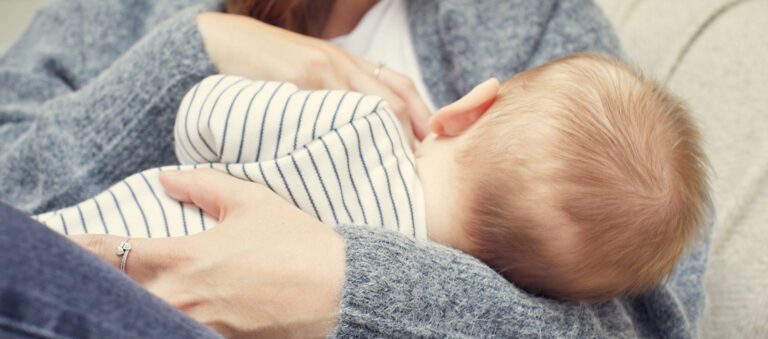How to Transfer Sleeping Baby to Crib: Expert Tips and Tricks
To transfer a sleeping baby to a crib, gently pick them up and place them in the crib, ensuring to support their head and bottom. Gradually ease them into a lying down position to minimize the chances of waking them up.
Transitioning a sleeping baby to a crib can be a challenging task for parents. However, with the right approach and techniques, it can be done smoothly and without disturbing your little one’s slumber. We will discuss effective methods to transfer a sleeping baby to a crib, ensuring a peaceful transition from your arms to their own sleeping space.
Whether you are a new parent or have been struggling with this transition, this guide will provide you with valuable tips and steps to help you master the art of transferring a sleeping baby to a crib without any fuss.
Gradually Easing Baby Into A Lying Down Position
When it comes to transferring a sleeping baby to the crib, one key strategy is to gradually ease the baby into a lying down position. This helps minimize any disruptions and allows the baby to remain in a comfortable and calm state throughout the process.
Placing Your Hand Gently On The Baby’s Chest
Begin by approaching the baby’s crib quietly and calmly. To ensure a secure and soothing environment, start by placing your hand gently on the baby’s chest. This touch offers a sense of comfort and security, as it simulates the feeling of being held. It also helps the baby stay relaxed while transitioning from your arms to the crib.
Slowly Lowering The Baby Into The Crib
Once the baby is settled and calm with your hand on their chest, you can start the process of lowering them into the crib. Remember to move slowly and steadily to avoid waking the baby. Starting with their feet, gradually lower their entire body into the crib while maintaining a gentle touch. This gradual descent helps the baby adjust to the change in position and temperature, ensuring a seamless transfer from your arms to the crib.
Using A Gentle Rocking Motion To Soothe The Baby
During the transfer, using a gentle rocking motion can provide additional comfort and soothe the baby. While lowering them into the crib, you can gently sway them back and forth, imitating the motion they experienced while being held. This rocking action offers a sense of familiarity and calmness, helping to ease any potential resistance the baby might have and ensuring a smoother transition to the crib.
Ensuring A Comfortable Sleep Environment
Discover effective techniques for smoothly transferring a sleeping baby to a crib without disrupting their peaceful slumber. Gain valuable insights on how to ensure a comfortable sleep environment to help your little one transition seamlessly to their own sleeping space.
Choosing A Firm And Safe Crib Mattress
A firm and safe crib mattress is essential for your baby’s comfort and safety while sleeping. A firm mattress helps to prevent suffocation and reduces the risk of Sudden Infant Death Syndrome (SIDS). When choosing a crib mattress, make sure to:
- Opt for a mattress that fits snugly in the crib without any gaps.
- Ensure that the mattress is firm and not too soft.
- Check that the mattress meets the safety standards and regulations.
Using Suitable Sleepwear For Your Baby
The type of sleepwear your baby wears can greatly impact their comfort during sleep. Here are some tips for selecting suitable sleepwear:
- Choose sleepwear made from breathable and comfortable materials, such as cotton.
- Avoid sleepwear with loose buttons, strings, or any choking hazards.
- Consider the temperature of the nursery and dress your baby appropriately.
Creating A Soothing And Calming Atmosphere In The Nursery
A soothing and calming atmosphere in the nursery can help your baby relax and sleep better. Here are some ways to create a sleep-friendly environment:
- Keep the nursery dimly lit during bedtime to signal to your baby that it’s time to sleep.
- Consider using a white noise machine or soothing music to drown out any background noises that might disrupt your baby’s sleep.
- Use blackout curtains or blinds to block out any external light sources that could disturb your baby’s sleep.
- Keep the nursery at a comfortable temperature, not too hot or too cold, to ensure your baby’s comfort.
Establishing A Consistent Bedtime Routine
Gently transition your sleeping baby from your arms to the crib by gradually easing them into a lying down position. Create a sense of familiarity by placing the crib in the same spot next to you before slowly moving it farther away over time.
Incorporating A Wind-down Period Before Sleep
One of the key elements of establishing a consistent bedtime routine for your baby is incorporating a wind-down period before sleep. This helps signal to your little one that it’s time to relax and prepare for sleep. During this wind-down period, aim to create a calm and soothing environment that promotes relaxation.
To achieve this, start by dimming the lights in the room and using soft, soothing music or white noise to create a peaceful atmosphere. Avoid stimulating activities such as playing with toys or watching TV during this time. Instead, opt for gentle activities that help your baby unwind.
- Gentle rocking or swaying
- Softly singing lullabies
- Quietly talking or reading to your baby
- Using a calming essential oil diffuser
By incorporating a wind-down period into your baby’s bedtime routine, you are helping them transition from the busyness of the day to a state of relaxation, making it easier for them to fall asleep and stay asleep in their crib.
Using Calming Activities Such As Bath Time And Storytime
In addition to the wind-down period, another way to establish a consistent bedtime routine for your sleeping baby is to incorporate calming activities such as bath time and storytime.
Starting with bath time, a warm bath can help relax your baby’s muscles and create a soothing experience. Use gentle, baby-friendly products and keep the bath time routine consistent each night. This signals to your baby that sleep is coming.
Following bath time, storytime is another fantastic opportunity to bond with your baby and create a calming atmosphere. Choose age-appropriate books with soothing illustrations, and read to your baby in a soft and soothing voice. Allow your baby to cuddle with a favorite blanket or stuffed animal during this time to provide comfort.
Implementing these calming activities into your baby’s bedtime routine:
- Start with a warm bath
- Wrap your baby in a soft towel and gently pat them dry
- Transition to the designated storytime area
- Choose a book and read it in a calm and relaxing tone
By incorporating calming activities such as bath time and storytime into your baby’s bedtime routine, you are setting the stage for a peaceful and restful night’s sleep in their crib.
Transitioning From Co-sleeping To Crib
Gently transition your baby from co-sleeping to a crib by gradually moving the crib away from your own sleeping space. Maintain a sense of familiarity by placing the crib in the same spot next to you that your baby is used to sleeping in.
Placing The Crib Next To Your Bed Initially
One of the key steps in transitioning your sleeping baby from co-sleeping to a crib is to place the crib next to your bed initially. By doing this, you create a sense of familiarity for your baby, as they will still be able to see and hear you while sleeping in their own space. This proximity also allows you to easily tend to their needs during the night. It’s important to ensure that the crib is safely positioned and that there are no potential hazards nearby. This initial placement serves as a gentle introduction to the crib and helps your baby adjust to the new sleeping arrangement.
Gradually Increasing The Distance Between The Crib And Your Bed
As your baby becomes more comfortable sleeping in the crib next to your bed, the next step is to gradually increase the distance between the crib and your bed. This can be done by moving the crib a few inches away every few nights, allowing your baby to slowly become accustomed to sleeping at a slight distance from you. By making this transition gradually, you can minimize any disruptions to your baby’s sleep routine and help them feel secure throughout the process. It’s important to monitor your baby’s reactions and adjust the pace of movement accordingly to ensure a smooth transition.
Providing Comfort And Reassurance To Ease The Transition
During the transition from co-sleeping to crib, it’s crucial to provide comfort and reassurance to your baby to ease the process. Establishing a consistent bedtime routine can greatly help in creating a sense of security and comfort for your little one. This routine can include activities such as reading a bedtime story, gentle rocking, or singing a lullaby. Additionally, using familiar objects like a favorite blanket or stuffed animal can provide further comfort during the transition. Be sure to respond promptly to your baby’s cues and provide reassurance as needed throughout the night. By consistently offering comfort and reassurance, you can help your baby feel safe and secure in their new sleeping environment.
Tips For Moving A Sleeping Baby Without Waking Them
Gently transfer your sleeping baby to their crib by placing a hand under their head and another under their bottom. Avoid sudden movements to keep them asleep throughout the process.
Using A Firm And Secure Grip
When it comes to moving a sleeping baby without waking them, it’s important to have a firm and secure grip on the little one. This will ensure their safety and prevent any sudden movements that may disturb their sleep. Start by placing one hand under their bottom while the other hand supports their head and neck. This way, you can maintain control and provide stability throughout the transfer process. Remember, a calm and steady grip is key to keeping your sleeping baby undisturbed.
Moving The Baby In A Slow And Gentle Manner
When you’re ready to move your sleeping baby to the crib, it’s essential to do so in a slow and gentle manner. This will minimize any jarring or sudden movements that can disrupt their sleep. Keep your movements smooth and controlled, avoiding any jerky or swift actions. Take your time and adjust your pace according to your baby’s comfort level. The aim is to create a seamless transition from one sleeping surface to another without disturbing their precious slumber.
Creating A Smooth Transition From One Sleeping Surface To Another
Ensuring a smooth transition from one sleeping surface to another is essential in successfully moving a sleeping baby to the crib without waking them up. One effective way to achieve this is by maintaining a consistent angle throughout the transfer process. Try to mimic the position they were sleeping in, whether it’s slightly inclined or on their side, to provide a sense of familiarity. Additionally, use a gentle swaying motion to imitate the rocking sensation they may have experienced in your arms or other sleeping environment.
- Ensure both the crib and the bed you are transferring from are at a similar height level to facilitate a smoother transfer.
- Use a soft and comfortable blanket or sheet in the crib to create a cozy and familiar sleeping surface.
- If your baby still shows signs of stirring during the transfer, try gently patting or stroking their back to soothe them back into a deeper sleep.
- Keep the lights dim or use a nightlight to maintain a calm and sleep-inducing environment.
- Consider using white noise or a soothing lullaby to provide a consistent and soothing auditory experience.
Moving a sleeping baby without waking them requires patience, care, and a gentle approach. By using a firm and secure grip, moving the baby in a slow and gentle manner, and creating a smooth transition from one sleeping surface to another, you can successfully transfer your little one to the crib without interrupting their peaceful slumber. Remember, the key is to maintain a calm and comforting environment, making the transition as seamless as possible for your sleeping baby.

Credit: www.todaysparent.com
Frequently Asked Questions Of How To Transfer Sleeping Baby To Crib
How Do You Put A Baby In A Crib When Sleeping?
Gently place your sleeping baby in the crib by bending your knees and getting as close to the crib as possible. Lay them down in a lying position and ensure that the crib is safe and secure. Gradually transition your baby to the crib by starting with naps and slowly moving the crib away from your sleeping space over time.
How Do I Transition My Baby From Sleeping With Mom To Crib?
To transition your baby from sleeping with mom to the crib, place the crib in the same spot next to you that they are used to sleeping in. Slowly move the crib farther away over time. Make sure the crib is safe and use a baby monitor.
Keep the routine consistent.
How Do I Transition From Bedside To Crib?
To transition from bedside to crib, start by placing the crib next to your bed so it feels familiar. Gradually move the crib away from your bed each night. Let your baby take naps in the crib and ensure it’s safe.
Use a baby monitor for peace of mind and maintain a consistent routine.
How Long Should You Hold A Sleeping Baby Before Putting Down?
To ensure a sleeping baby stays asleep, hold them for at least 8 minutes before gently transferring them to the crib. This allows them to remain in a deep sleep state and increases the chance of a successful transition without waking them up.
Conclusion
Transitioning a sleeping baby to the crib may seem like a daunting task, but with patience and a gentle approach, it can be done. Starting by keeping the crib close to your own sleeping space and gradually moving it farther away will help create a sense of familiarity.
Using a baby monitor for peace of mind and maintaining a consistent routine will also aid in the transition process. Remember to move the baby slowly and gently, ensuring their comfort and uninterrupted sleep. With these strategies, you can successfully transfer your sleeping baby to the crib and enjoy peaceful nights for both you and your little one.







